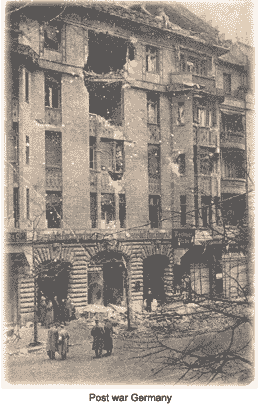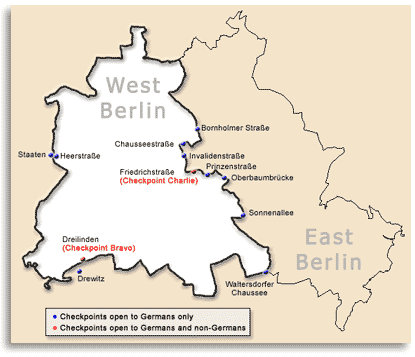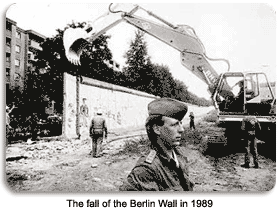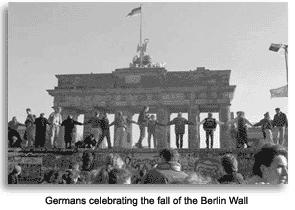The Berlin Wall, which separated East and West Germany since 1961, represented the rise of the Cold War. It was torn down by masses of people in 1989.
Introduction
In post-World War II Germany, the Berlin Wall was erected on August 16, 1961, along the demarcation between the eastern sector of Berlin controlled by the Soviet Union, and the western sectors occupied by the United States, France, and Great Britain. East Germany, officially the German Democratic Republic (GDR), was a Communist state that existed from 1949 to 1990 in the former Soviet occupation zone of Germany.
The Soviet sector was by far the largest and covered most of east Berlin, including Friedrichshain, Kreuzberg, Mitte, Prenzlauer Berg, Kreuzberg, and Lichtenberg. Its twofold purpose was to prevent well-educated East Germans from leaving East Germany — a "brain drain" — and to impede approximately 80 spy centers and organizations from interfering with the Russian sector.
The threat of a second Great Depression loomed large in Europe, and Germany was one of the hardest-hit areas. Most German cities had been all but obliterated, and transportation systems lay in ruins. Routinely, refugees fled from East to West in search of a society sound enough for them to work for the barest daily essentials.
 In a rare move, the Allied victors decided to allay an economic crisis by helping to rebuild the most-devastated areas as quickly as possible. That effort was called the Marshall Plan, in honor of George C. Marshall, then U.S. Secretary of State, who first called for Allied participation in the restoration of Europe. The success of that strategy earned Marshall a Nobel Peace Prize.
In a rare move, the Allied victors decided to allay an economic crisis by helping to rebuild the most-devastated areas as quickly as possible. That effort was called the Marshall Plan, in honor of George C. Marshall, then U.S. Secretary of State, who first called for Allied participation in the restoration of Europe. The success of that strategy earned Marshall a Nobel Peace Prize.
The "Berlin Crisis" involved a controversy so bitter and so sustained that at its height, world leaders feared that a misstep could trigger a nuclear war. The crisis unfolded through a war of words, diplomatic negotiations, superpower summits, and military posturing and preparations, — thus the term "Cold War" — as East and West disputed over Berlin`s future.
For presidents Eisenhower and Kennedy, U.S. credibility was at stake: A failure in Berlin could disrupt NATO and weaken American influence in West Germany, the key to the balance of power in Europe. The Berlin Wall was the flashpoint of the Berlin Crisis. The Berlin Crisis was a flashpoint of the Cold War.
The Iron Curtain descends
Berlin was considered to be the key to the balance of power in post-World War II Europe. The postwar, sequestered Soviet Union, was nevertheless active beyond its borders. Events around the world, many seemingly unrelated, represented battlefronts in the Cold War.
Some battlefronts were hidden from public view for decades. Other battlefronts, like the Berlin Crisis, were highly public. The Berlin Crisis started with the 1948 Berlin blockade ordered by Soviet premier Nikita Khrushchev, which led to the Berlin Airlift by the Western Allies.
Cold War tensions continued to smolder for four decades after the World War II defeat of Germany. The construction and destruction of the Berlin Wall stand as milestones of the Cold War era.
In July 1958, the East German Fifth Congress ordered a wholesale collectivization of agriculture and a sharp rise in industrial output. That was part of a seven-year economic plan to bring per capita consumption in the GDR up to the level of West Germany.
The plan also repressed private trade and created supply gaps behind the Iron Curtain, which became increasingly severe and oppressive. Dissatisfaction by an increasing number of people in the GDR caused them to seek refuge in the West — a major loophole in the GDR scheme of things.
The border to West Berlin lay open to East Germans, and hundreds left the country daily. Nearly all of them went by subway or S-Bahn (electric commuter train), undetected among the thousands of commuters who worked or shopped in the West. Regular spot checks by the police on anyone carrying a suitcase exerted little impact. Most people easily evaded them by making repeated journeys with a few belongings at a time.
 At an international press conference on June 15, 1961, the leader of the east German Socialist Unity Part of Germany (SED) and president of the Privy Council, Walter Ulbricht, answered a journalist`s question: "I understand your question as follows: There are people in West Germany who want us to mobilize the construction workers of the GDR to build a wall. I am not aware of any such plans ... No one has the intention of constructing a wall." But the wall was exactly what he wanted from Khruschev.
At an international press conference on June 15, 1961, the leader of the east German Socialist Unity Part of Germany (SED) and president of the Privy Council, Walter Ulbricht, answered a journalist`s question: "I understand your question as follows: There are people in West Germany who want us to mobilize the construction workers of the GDR to build a wall. I am not aware of any such plans ... No one has the intention of constructing a wall." But the wall was exactly what he wanted from Khruschev.
The international political situation between NATO and Warsaw Pact nations continued to intensify. On November 27, 1958, the Soviets under Khrushchev delivered the Berlin Ultimatum in an attempt to stem the tide of refugees.
The ultimatum demanded that the western allies withdraw their troops from West Berlin and that it should become a "free city" within six months. The threat of a separate peace treaty between the Soviet Union and East Germany loomed on February 17, 1959. A meeting in Vienna between President Kennedy and Premier Khrushchev on June 3 and 4, 1961, failed to end the impasse.
The ultimatum was a fiasco, and the situation was even worse than before. Continued tension during the six-month period had only increased the flow of refugees who feared that time was running short. When the ultimatum ran out, there was a brief respite. But as the effects of the "Seven-Year Plan" began to be felt, the flow of refugees rose again.
Construction of the Berlin Wall
The Berlin Wall was erected on August 13, 1961. Early on that Sunday morning the GDR began, under Secretary General Erich Honecker, to block off East Berlin and the GDR from West Berlin by means of Barbed Wire and antitank obstacles.
Streets were torn up, and barricades of paving stones were erected. Tanks gathered at crucial places. The subway and local railway services between East and West Berlin were interrupted. Inhabitants of East Berlin and the GDR were no longer allowed to enter West Berlin, amongst them 60,000 commuters who had worked in West Berlin. In the following days, construction brigades commenced to replace the provisional barriers with a solid wall.
Thousands of angry demonstrators quickly gathered on the West Berlin side of the divide. At one crossing point, protesters tried to trample down the barbed wire, only to be driven back by guards with bayonets.
The West German chancellor, Konrad Adenauer, appealed for calm, saying in a broadcast to the nation the following evening: "Now, as always, we are closely bound to the Germans of the Russian zone and East Berlin. "They are and remain our German brothers and sisters. The Federal Government remains firmly committed to the goal of German unity."
Outrage from the international community erupted at the abrupt decision to cut off one side of the city from the other. A Foreign Office spokesman in London said the restrictions were contrary to the four-power status of Berlin, and therefore illegal.
The American secretary of state, Dean Rusk, called it a "flagrant violation" of East-West agreements, and said there would be a vigorous protest to Russia. Yet, the reaction of the Allies was moderate, given that the three essentials of American policy regarding Berlin were not affected: the presence of allied troops, free access to Berlin, and the West Berliners` right of self-determination.
After August 23, 1961, citizens of West Berlin were no longer allowed to enter East Berlin. On September 20, the forced evacuation of houses situated immediately at the border to West Berlin began.
On August 17, 1962, Peter Fechter, an 18-year-old citizen of East Berlin, bled to death after he was shot down by a East Berlin border patrol in his attempt to escape over the wall. The last to die was Chris Gueffroy on June 2, 1989. Many attempted to escape over the 28 years of the wall`s existence.
First, there was a wall that comprised concrete segments with a height of about about 13 feet, usually with a concrete tube on top of it. Behind it on the east side lay an illuminated control area — also called the "death area." Refugees who had reached that area were shot without warning.
A trench that followed was intended to prevent vehicles from breaking through. Then there was a patrol track, a corridor with watchdogs, watchtowers and bunkers, and a second wall.
The barrier cut through 192 streets (97 between East and West Berlin and 95 between West Berlin and East Germany), 32 railway lines, eight S-Bahns, and four underground train lines, three autobahns (freeways), and several rivers and lakes. On the waterways, the wall consisted of submerged railings under constant surveillance by patrol boat crews.
 Due to the danger of escape attempts over the wall, numerous tunnels were dug, allowing about 150 East Berliners to escape undetected. As time passed, the wall was gradually perfected and became more impassible.
After October 1964, it was gradually strengthened, doubled up and transformed into a "modern border," which assumed its final appearance from 1979 to 1980. The partition left West Berlin stranded in the midst of the Soviet zone, 110 miles from the border with the western zones. That unusual geopolitical situation became difficult to handle.
Due to the danger of escape attempts over the wall, numerous tunnels were dug, allowing about 150 East Berliners to escape undetected. As time passed, the wall was gradually perfected and became more impassible.
After October 1964, it was gradually strengthened, doubled up and transformed into a "modern border," which assumed its final appearance from 1979 to 1980. The partition left West Berlin stranded in the midst of the Soviet zone, 110 miles from the border with the western zones. That unusual geopolitical situation became difficult to handle.
On June 26, 1963, President John F. Kennedy delivered a historic speech in Rudolph Wilde Square in Berlin. The square was packed with cheering West Berliners. It was a spectacle new to Kennedy — one to two million people assembled to greet him. In the midst of the Cold War he declared, “There are many people in the world who really don’t understand, or say they don’t, what is the great issue between the free world and the communist world. Let them come to Berlin.” President Kennedy, identifying with the citizens of Berlin in their quest for freedom and to be reunited with their families in East Berlin, said, “Ich bin ein Berliner.” (“I am a Berliner”).
The Iron Curtain begins to ascend
President Ronald Reagan delivered a speech at the Brandenburg Gate in West Berlin on June 12, 1987. His comments were to the people of West Berlin, but audible on the East side of the Berlin Wall. Part of Reagan`s intended audience was none other than Mikhail Gorbachev:
"There is one sign the Soviets can make that would be unmistakable, that would advance dramatically the cause of freedom and peace. General Secretary Gorbachev, if you seek peace, if you seek prosperity for the Soviet Union and Eastern Europe, if you seek liberalization: Come here to this gate! Mr. Gorbachev, open this gate! Mr. Gorbachev, tear down this wall!
The Iron Curtain began to rise when the wall met its demise. Soon afterward, Gorbachev made his first official visit to West Germany in May 1989. While there, he announced that Moscow would no longer forcefully prevent democratic conversion of its outlying states. Hungary opened its border with Austria on September 11, 1989. The opening of the borders between East and West Berlin, which also symbolized the end of the Cold War, began on June 13, 1990.
Reconstruction of Berlin
Since the Berlin Wall became obsolete with the 1989 opening of the borders between East and West Germany, Berliners have created massive reconstruction, mostly in what was East Berlin. The heart of the city, the Mitte district, was rebuilt, though remnants of the communist regime still remain. The 19th-century Reichstag building, the new seat of the German parliament, gained a modern glass cupola to replace the original dome destroyed by fire when the Nazis came to power. A museum at the former site of Checkpoint Charlie, the famous border post in the American sector, memorializes the Berlin Wall.
 The greatest reconstruction has been the reconnection of a people — reconstruction of strained relationships and cultures, not just in Germany, but across Eurasia.
The terms Perestroika and Glasnost, Russian for restructuring and openness respectively, were used to describe the set of reforms instituted by Mikhail Gorbachev in the late 1980s. The terms also could be used to describe the end of the Cold War.
The greatest reconstruction has been the reconnection of a people — reconstruction of strained relationships and cultures, not just in Germany, but across Eurasia.
The terms Perestroika and Glasnost, Russian for restructuring and openness respectively, were used to describe the set of reforms instituted by Mikhail Gorbachev in the late 1980s. The terms also could be used to describe the end of the Cold War.